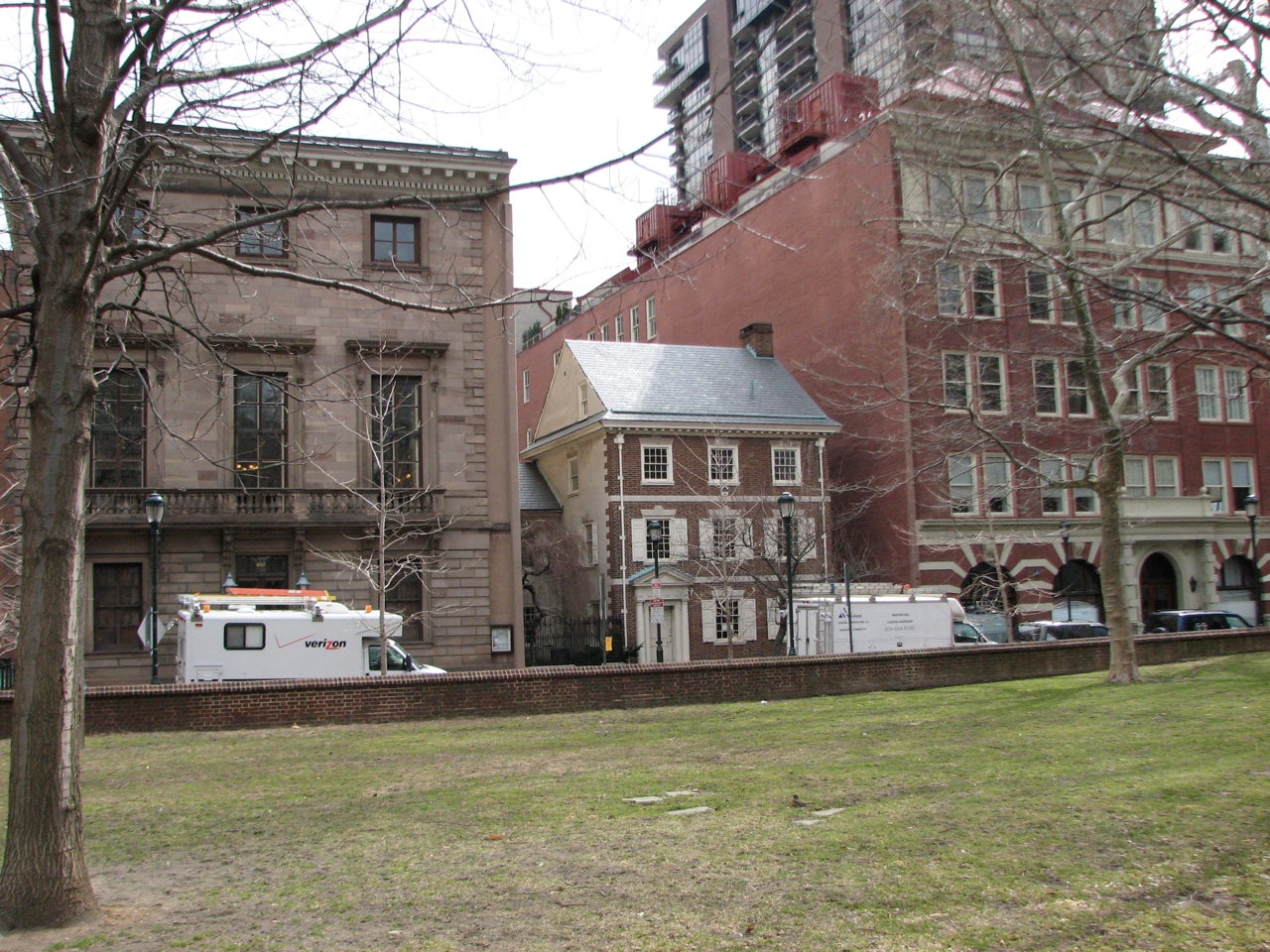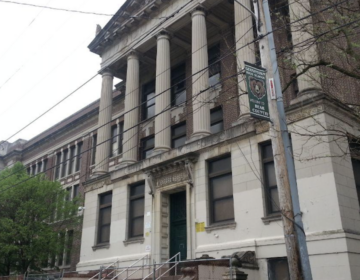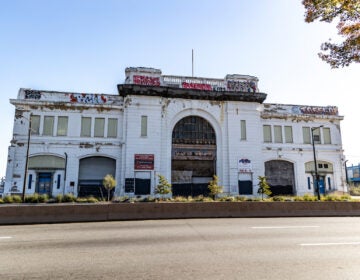Commonwealth Court hears preservation arguments

On Tuesday, the Commonwealth Court of Pennsylvania heard oral arguments in two cases involving protected historic buildings in Philadelphia: the mid-century Dilworth House on Washington Square and a maimed and vacant mansion-turned-nursing-home at 40th and Pine streets in West Philadelphia.
Both cases stretch back years. Both also raise questions about evolving legal standards in historic preservation cases, which will be summarized here.
First, some factual background.
-
The case at 40th and Pine involves a historic mansion owned by the University of Pennsylvania, which has received approval from the Historical Commission to tear down the building and replace it with student housing in partnership with developer Jonathan Weiss. That decision has been appealed by the Woodland Terrace Homeowners Association and some other nearby property owners. It was upheld by the Board of L&I Review (the vote was 2-2) and by Judge Ellen Ceisler of the Court of Common Pleas.
-
The Dilworth House is a reconstruction of an early-19th-Century home on Washington Square, built by the family of then-Mayor Richardson Dilworth as a gesture of faith in the urban renewal project that was transforming Society Hill in the 1950s. Despite its relative youth, the house is historically protected. In 2007, developers proposed partially deconstructing the house and building a 16-story tower behind it. The Historical Commission approved the partial demolition, calling it an alteration, which decision has been appealed by the Society Hill Civic Association and a group of neighbors.
The Commonwealth Court is likely to take a few months to hand down rulings in the two cases. Whatever those decisions are, it would be surprising if they aren’t appealed by one side or the other.
The arguments in Tuesday’s hearings revolved around some common themes. Chiefly, how much deference should the Historical Commission receive when it comes to interpreting the local preservation ordinance?
In the case of the Dilworth House, the Historical Commission originally decided to approve the partial demolition of the structure and to allow the construction of a 16-story tower in the Society Hill Historic District. That decision was overturned by the Board of L&I Review (BLIR), which hears appeals of local boards’ and commissions’ rulings. The BLIR’s decision, in turn, was upheld by the Court of Common Pleas, the next higher appeals court.
When the case was appealed again, Commonwealth court remanded it back to the Board of L&I Review, saying that, in matters of interpreting the local ordinance, the Historical Commission should be given deference in determining what constitutes a demolition or alteration, and what constitutes “appropriate” development in historic districts. It said that BLIR was wrong to make its own judgments on the credibility of key witnesses rather than simply review the Historical Commission’s record. The Commission’s expertise on the matter supersedes that of the appeal board, the Court reasoned.
“In sum,” wrote the Commonwealth Court judges, “this Court concludes that the Board erred when it did not give deference to the Historical Commission’s interpretations of the Historic Preservation Ordinance, specifically its interpretation of the terms “alteration” under Section 2(a), “in significant part,” and “demolition,” under Section 2(f), and “appropriateness” under Section 7(k) of the Historic Preservation Ordinance.”
The Board of L&I Review considered the case again, following the stricter standard of deference, which has come to be referred to locally as the Turchi standard, so named for John and Mary Turchi, the owners and would-be redevelopers of the Dilworth House. But the Board nevertheless held to its original ruling, overturning the Historical Commission’s decision to allow the partial demolition and development of the 16-story tower. The Court of Common Pleas also held firm.
So now the case is back at Commonwealth Court, with both lower courts saying that the Historical Commission’s approval was issued in error—even under the stricter terms of the Turchi standard. Venture your own guesses as to the outcome of the current appeal.
The central question in the 40th and Pine case is slightly different. Namely, at what point has the owner of a historic property sufficiently proven that the property can’t be sold or reused and thus represents a hardship?
Paul Boni, representing the appellants who are trying to block the demolition of the house, said that Penn hasn’t exhausted the requirements to prove hardship. He said that even though Penn had consultants who said the building couldn’t be adapted for reuse at a reasonable rate of return, it never actually put the property up for sale. He referred to a provision of the Commission’s rules and regulations which says that an applicant seeking demolition approval “has an affirmative obligation in good faith to attempt the sale of the property …”
“You’re being asked to read that requirement out of the law,” Boni told the court.
Matt McClure, representing Penn, argued that the central question in the case is different: can the property be reused? Every earnest respondent to Penn’s solicitations of interest for redeveloping the property felt the building would need to be demolished, McClure said. The case, he said, is much more complicated than the narrow regulation the appellants were building their argument on.
“The appeal is more akin to a filibuster,” McClure told the court.
(Penn recently put forth a new proposal that would have kept the existing building and built a five-story student-housing structure around it, but the appellants rejected that proposal.)
A final note: in both cases, deputy city solicitor Andrew Ross made brief arguments in support of the Historical Commission’s original decisions. They amounted, more or less, to this: somebody has to decide what words mean, and when meanings are contested by parties with various interests, it should fall to the professionals on the Historical Commission to have the final word.
WHYY is your source for fact-based, in-depth journalism and information. As a nonprofit organization, we rely on financial support from readers like you. Please give today.






